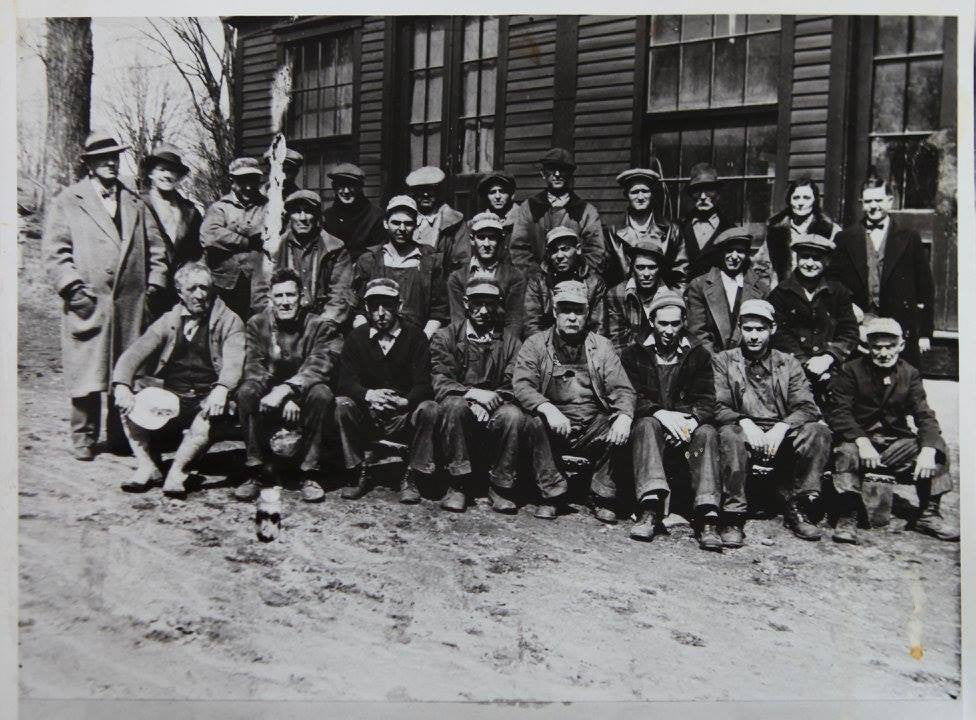Old black & white pictures, moldy leather-bound ledgers, thousands of jumbled penny postcards, carbon copies of letters (remember carbon paper?), and invoices are among the artifacts that we reviewed at the University of Maine's Fogler Library, the Oakland Area Historical Society and the Oakland Public Library earlier this month. These items gave us a new glimpse into the workings of the iconic Emerson & Stevens axe company from the 1880's into the 1940's.
While there are still a lot of records to review (another 80 boxes at the University of Maine alone!) we were able to glean some of these nuggets of company history and a few interesting anecdotes.
1. In 1886, Emerson & Stevens along with many of the other large axe companies entered into a price fixing agreement. Among the correspondence files were letters from the secretary at the Douglas Axe Company of Boston to Emerson & Stevens documenting an agreement among Oakland axe manufacturers Emerson & Steve and Hubbard & Blake, and other prominent axe makers such as The Collins Company, William Mann to set the price of axes at no less than $6.00 per dozen. There was a similar agreement among the scythe manufacturers.

2. While the Oakland axe companies competed head to head they also cooperated extensively with each other. Invoices show evidence of the companies selling polls (the axe head without the hardened steel bit), handles and shipping boxes to each other when one company was short. They minimized freight costs by buying entire train cars full of steel then dividing it among themselves. There is also a lot of correspondence between the Oakland companies trading employees and vetting new hires. Below is an example of a steel order split between Emerson & Stevens, Spiller, and King Axe.

3. Axe handles were sourced from multiple makers and made out of many different types of wood. Emerson & Stevens got handles from makers in Maine such as Lemuel Cotton of Hiram, Gammon Handle of Lovell, and Jacquith of Clinton and from out of state companies such as Link in Indiana, Railway Handle of Virginia, and Piper Handle in New Hampshire. The wood used was not just hickory, but maple and "azure oak," There is also mention of "French Favorite" and "French Special" axe handle patterns. Another kick is seeing the price for handles on these invoices. In 1920 Lemuel Cotton of Hiram, Maine was selling them for $2.50 and $3.50 PER DOZEN!
4. Salesmen will be salesmen. Some of the most amusing correspondence in the records was that between Emerson & Stevens salesman (and axe company owner) J.H. Witherell and the home office from the late 1870's. It was customary for a traveling salesman like Witherell to write to the home office nightly on hotel stationary giving an update on his progress. The complaints lodged by Witherell will be familiar to salespeople of today: "when are you going to ship my orders," "I'm getting reports that quality is not up to snuff," "when can I expect my commission check." Here is an example of one of these letters where you can feel the exasperation of the traveling salesman.
5. Invoices for Labels Date the Manufacture of Certain Brands. We know that Emerson & Stevens made axes under a number of trade names. Invoices from label makers allow us to date when these brands were being produced. In 1940 they were making axes under the Witherell, Lumberman's Pride, and Forest King names. 1944 saw the Pine Tree, Diamond and Damon brands used. The Forest King and Lumberman's Pride brands were still being used in 1946. Here is an order for Forest King printing plates from 1940:

6. Anecdote #1 - In 1904, Emerson & Stevens sold axes to the Indianapolis hardware store owned by author Kurt Vonnegut's great uncle.
7. Anecdote #2 - Emerson & Stevens was still buying thousands of pounds of "Pure Messalonskee Lake Ice" to cool their lunches into 1940 (at $.40/lb.).
We will keep digging and hope to produce a comprehensive history of Emerson & Stevens and other Maine axe companies in the coming years. But this was a great start.
Thanks to the staff at the Fogler Library at the University of Maine in Orono, the Oakland Area Historical Society and the Oakland Public Library for opening their doors to us and making all these materials available. We'll be back!




